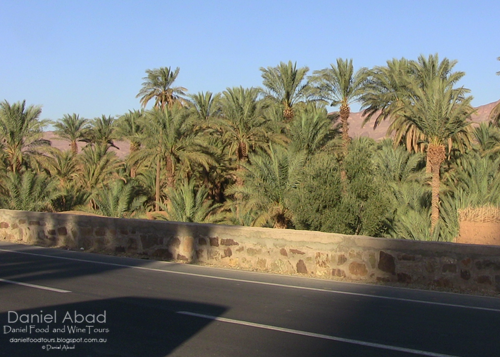Twenty years after my two sons visited the
Salvador Dali museum, I went to Figueres in Spain and entered the world of one
of the most original, interesting and famous artists of the 20th
Century. My youngest son Paul
accompanied me this time. For him, it
was like returning to the home of a man he has admired ever since, when, as a
young teenager, we had a family outing to a Dali exhibition in Brisbane. In his company, this visit was made even more
special.
 |
| Daniel's Food and Wine Tours - Approaching the Dali Museum; Figueres, Spain |
The name Figueres derives from that of Ficaris, of
Visigoth origin. During the Spanish
Civil War, the town suffered heavy bombing as it was the last Republican outpost to stand against Franco.
 |
| Daniel's Food and Wine Tours - The Dali Museum building; Figueres, Spain |
Figueres recovered during the 1950s,
consolidating its economy around the tourism industry. Close
to the border with France, but not as touristy and much smaller than Barcelona,
the city offers a relaxing atmosphere, quiet cafés, great food, wine, beaches an
historic Old Town and picture-perfect
squares.
 |
| Daniel's Food and Wine Tours - The quiet streets of Figueres, Spain |
 |
| Daniel's Food and Wine Tours - An interesting and cute stairway |
Figueres, is
the birthplace of artist Salvador Dali. It
houses the “Teatre-Museu Gala Salvador Dali”, a large museum designed by Dali
himself. Right where
the Museum now stands, there was a 19th century theatre which was
badly damaged during the Franco bombings.
The building remained in ruins for several decades until Dali bought it
and converted it into the museum that we see today.
 |
| Daniel's Food and Wine Tours - Just before entering the Museum; Figueres, Spain |
 |
| Daniel's Food and Wine Tours - The Kiosk and the Sculpture near the Museum |
The Salvador Dali Museum is the largest surrealist object in the world. It is the second most visited museum in all of Spain, after the Prado Museum in Madrid, thus attracts many
visitors. It is, in its entirety, Dali's greatest work,
and it was created by Dali specifically to offer its visitors a unique visual
experience. The artist moved back to
Figueres late in life. He is buried in a
crypt in the museum. Figueres is also the birthplace of Narcis Monturiol,
inventor of the first successful machine-powered submarine. Also born here was Monica Naranjo, one of the
best-selling Spanish singers of the 1990s and 2000s.
 |
| Daniel's Food and Wine Tours - Dali Sleeping |
 |
| Daniel's Food and Wine Tours - The many faces of Dali |
On entering the museum the first area to visit
is the courtyard and immediately you are struck by Salvador Dali's incredible
imagination and surreal view on the world.
In the courtyard, a statue of a well-endowed female figure stands on a
black Cadillac whilst the walls of this inner courtyard are decorated by golden
mannequins.
 |
| Daniel's Food and Wine Tours - The Black Cadillac |
 |
| Daniel's Food and Wine Tours - The Golden Mannequins |
The next room from here is known as the stage
and is a huge room lit by the large glass sphere that you can see from the
outside of the building. One wall is a
huge window onto the courtyard and the other has a huge painting from the very
high ceiling to the floor.
 |
| Daniel's Food and Wine Tours - The Glass Sphere in the Stage Room |
 |
| Daniel's Food and Wine Tours - The Wall to Wall Painting in the Stage Room |
The rest of the museum contains many rooms with
different collections of works. These
cover a great range of his works from some of his earliest to some he created
in the last years of his life. The
museum also contains exhibits made specifically for the museum such as the Mae
West room.
 |
| Daniel's Food and Wine Tours - One of Dali's earlier works |
 |
| Daniel's Food and Wine Tours - The Mae West Room |
Whatever your feelings about this complex,
egocentric man, this museum is worth every cent and minute you can spare. I could have stayed there for hours on end
and let my mind wander with the amazing vision of the man that was Dali.
























































